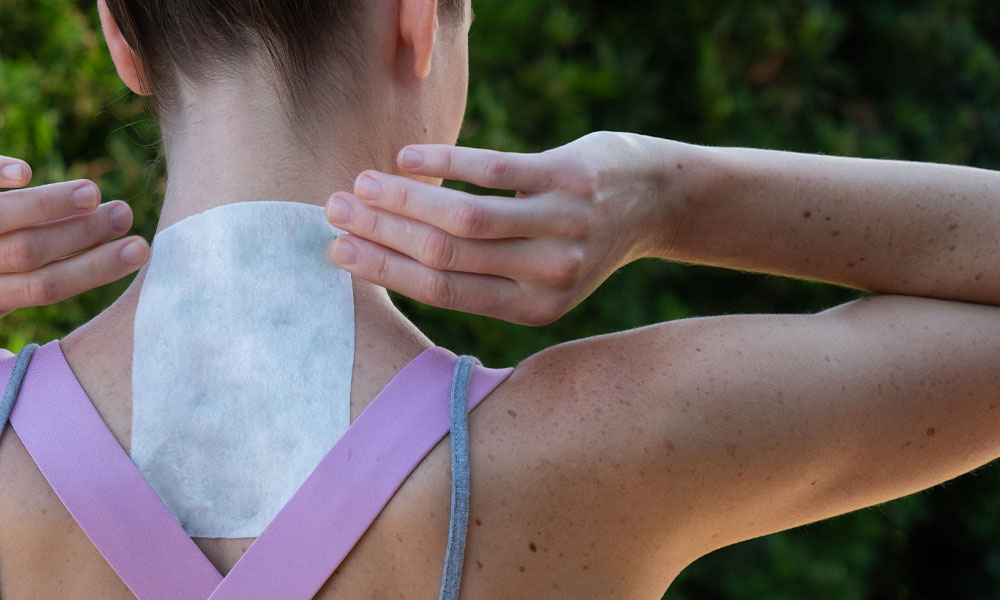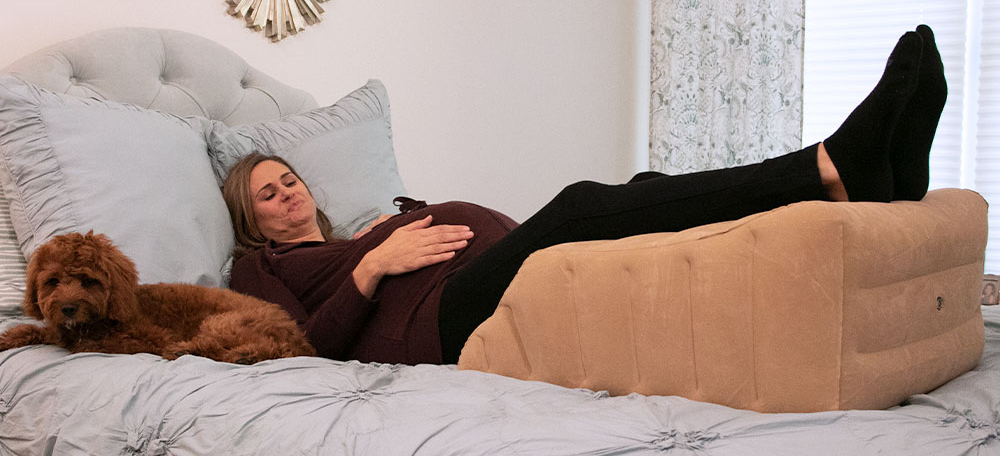Pulled and strained muscles are quite a common occurrence. One simple misstep or miscalculation while playing a sport or going about your daily life can result in a muscle-related injury in an instant.
The leg muscles are one of the most susceptible muscle groups to experience a muscle strain or pull because they are constantly being utilized to walk, run, or stand. The leg muscle groups can be broken down into the muscles of the thigh and the muscles of the calf. Injuries to either can be painful and uncomfortable.
The hamstring is a group of three major muscles in the thigh that work to allow for proper leg movement. The muscles are located along the inner thigh, and when overstretched or overexerted, can result in muscle fiber tears leading to a muscle pull and strain.
Below is a discussion of seven tips (and a little review of the PRICE formula) on how you can help a pulled hamstring or other related hamstring injuries. It is recommended to seek out medical expertise if a serious hamstring injury is suspected. Some hamstring injuries require surgery so it is advised to get a severe hamstring injury checked out by a doctor.
Tip 1: Protect the injury from further injury
The protect arm of the PRICE formula aims to prevent reinjury or further damage to the area. Reinjuries to the hamstring have a relatively high recurrence rate of 12% to 33%. The statistic illustrates the importance of ensuring an injured hamstring muscle is adequately protected.
The muscles of the hamstring extend from the hip to the knee and as such are difficult to immobilize. To help protect against a hamstring injury one can utilize crutches or a cane to help minimize the amount of weight that the injured leg needs to support.
Protection against further injury is a priority when trying to treat a pulled hamstring. Since the hamstring muscles are frequently used during regular everyday tasks it is an easily reinjured muscle when your muscle is actively healing. Taking the necessary precautions and protecting the hamstring by utilizing crutches or a cane is advised to avoid any further damage and injury that could lead to an even longer recovery time.
Tip 2: Rest the area as needed
When some people experience an injury it is easy to get overwhelmed with the fact that the injury will impede their daily life, but it is important to try and keep a positive outlook. Acting in haste and continuing an activity in spite of an injury is a recipe for disaster. When you injure your hamstring it is important to stay calm, listen to your body, and make recovery a priority.
In addition to protecting the pulled hamstring, it is advised to rest the area and reduce normal activity with those muscles. For a hamstring injury, activities like running, sprinting, squats, jumping should be minimized.
An important aspect of resting the injured area is to ensure you are not restricting all movement to the muscle group. The concept of relative rest is a great ideology to follow. Relative rest is essentially just resting relative to what you would normally do.
A great example is if a person is a marathon runner and they pull their hamstring. After a few days of recovery they should begin to slowly reintroduce activity by moving around on crutches, then move to walking with a brace, and slowly reintroduce running. Relative rest allows an individual to retain a better range of motion throughout recovery and could potentially speed up recovery time by increasing circulation to the injured area through the light movement of the muscles.
Tip 3: Ice the injury

When a hamstring injury occurs it can become painful and inflamed. These responses are normal and are your body’s way of signaling to you that there is an injury and that you should stop. Even though these responses are normal, they can be uncomfortable, painful, and irritating.
To lessen the pain and inflammation following a hamstring injury, you can utilize ice or a cool pack. The cold temperature from the ice reduces the sensation of pain and also causes vasoconstriction in the area it is being applied. Vasoconstriction is essentially the limiting of blood flow to the injured area and is a part of the reason icing reduces inflammation. Reducing inflammation and providing a temporary numbness to the area is a great first line of relief for a hamstring injury.
After a day or so the initial inflammation will typically go down, and icing becomes more of a way to achieve pain relief rather than a means of limiting excessive swelling and inflammation. Icing poses some risks like frostbite to the applied area, and as such can become quite tedious to constantly apply ice and remove it every 10 minutes. Hempvana’s Cold as Ice Gel Patch is a great way to get relief by cooling the injury without having to constantly worry about getting frostbite.
Tip 4: Use compression to help support blood flow and reduce swelling
Compression is another aspect of the PRICE formula that aids in the management of inflammation. Compression works by applying pressure around the injury site, which decreases the amount of fluid that can build up around the injury.
For lower leg strains, compression socks can be worn to apply even and constant pressure to the injury. With a hamstring muscle injury, one needs to either have compression wear that can reach the upper leg, or utilize a compression wrap.
As with icing the injury, compression poses some risk. If a compression garment is too tightly bound it can cut off blood supply to the lower extremities. A compression wrap should be tight enough to provide even pressure but not too tight where your lower extremities begin to lose coloration or get a pins and needles feeling.
Compression should be worn throughout the day and taken off before bed to limit the chance of limbs not getting enough oxygen.
Tip 5: Elevate your legs while you rest

Elevation in the third and final way to limit inflammation and fluid build-up in a muscle injury. Elevation works by positioning the injured area above the rest of your body. By doing this, gravity will push excess fluids away from the injury site and limit inflammation.
For a leg injury, elevation can be accomplished by laying on your back and propping your injured leg above the rest of your body. For a hamstring injury, the utilization of pillows to elevate can be inadequate. The Hempvana Leg Ramp is the perfect way to get ample elevation that will ensure you are getting the most out of elevating your injured limb.
Elevation can also be performed alongside icing and compression for a method that is sure to limit inflammation and reduce pain.
Tip 6: Practice physical therapy exercises as you heal
Some injuries can require significant amounts of downtime to allow for proper healing. During this time, muscles can weaken through disuse and may require physical therapy to restore full strength function of the muscle.
For hamstring injuries, in particular, there is a high rate of reinjury as described above. With the high rate of reinjury, it means that care and precaution should be taken to ensure you allow your body the time and rest it needs to properly heal. Once healed, physical therapy aims to restore strength and function to the affected area.
With minor injuries, you can look up the appropriate physical therapy exercises to do yourself at home, but if you suspect a greater injury, seek guidance from a physical therapist.
Physical therapy works in a similar fashion to the relative rest methodology. During each session, a physical therapist will gradually increase the difficulty and duration till the injured area is back to normal strength. Training is usually also accompanied by TENS machine stimulation and massages to the area.
Tip 7: Use over the counter pain relief methods as necessary
Throughout the healing process, it is not uncommon to experience soreness and pain at the sight of the injury. As such it is advised to take over-the-counter pain relief as needed.
Pain relief is not just limited to pills — topical analgesics make for a great solution to muscle tenderness and soreness. Hempvana Platinum Pain Relief Cream is formulated to provide fast relief while simultaneously hydrating and moisturizing the affected area.
Topical pain relief is an ideal option for muscle discomfort because it is a targeted relief that is fast-acting and can also support healthy skin. The treatments described above like compression and icing can irritate the surface of the skin. The hemp seed oil found in Hempvana’s cream on the other hand can help moisturize and hydrate these areas for a more comfortable recovery experience.
Conclusion
Pulled muscles are quite the headache but it is important to effectively treat them when they occur. Following the PRICE methodology and pairing it with physical therapy and pain relief tools will give your muscles the best shot at a full recovery.
These tips can apply to any muscle group pull or strain but extra care and attention to detail should be taken with hamstring muscle injuries. With a high rate of reinjury, the hamstring requires extra TLC to get back to normal. Good luck!
